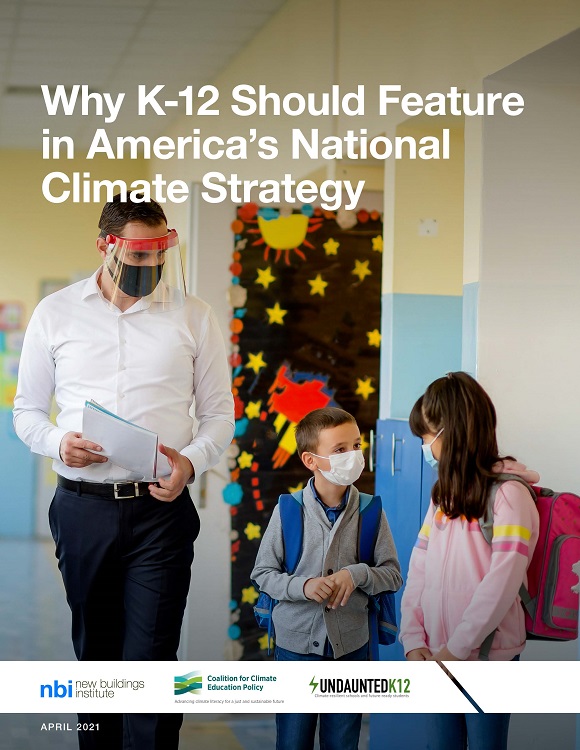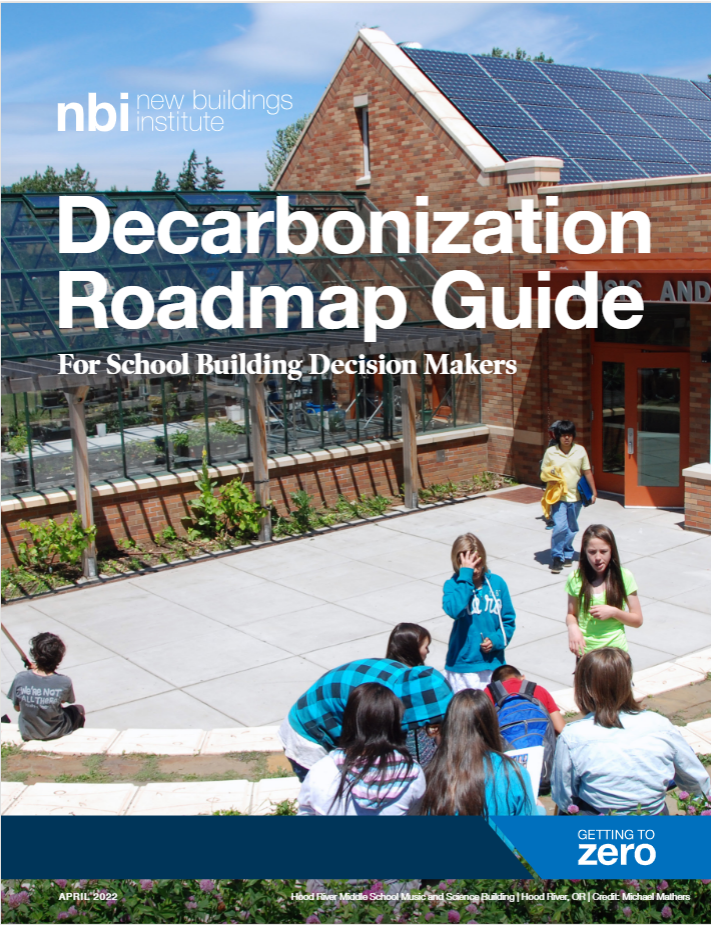New Buildings Institute works to transform how American school buildings use energy and contribute to carbon emissions. We partner with state and school district leadership, design professionals, facilities managers, and school occupants to advance districts on the road to carbon neutrality based on our research and learnings in zero energy schools. Schools are positioned to catalyze increased awareness, public support, workforce development, and demand for healthy buildings to help solve the climate crisis. They also serve a central role in addressing equity and enhancing community resilience.
Here You Can Find: Resources and Webinars
Why?
- Schools represent the third largest sector of commercial building energy usage in the United States. School building energy consumption costs U.S. school districts more than $8 billion per year and produce emissions equivalent to 18 coal-fired powerplants.
- Students and staff will spend 1,000 hours a year (Center for Public Education) in their school, making a healthy indoor environment of utmost importance.
- Healthy, energy efficiency, carbon neutral schools improve student performance, health, and wellness. For example, students in classrooms with natural light showed a 20-26% improvement on test scores compared to artificially lit environments. These schools are the training ground for our current and future leaders looking through the lens of climate change.
- Students across the world are demanding climate action. One study found that if only 16 percent of high school students in high- and middle-income countries were to receive climate change education, we could see a nearly 19 gigaton reduction of carbon dioxide by 2050.
- Zero energy (ZE) schools are possible. According to the Getting to Zero database, these zero energy schools use approximately one-third of the energy of an average conventional school and offset it with renewable power. This reduces operating costs and the carbon footprint of our schools. These buildings and their occupants are one of the solutions in our toolbox to battle climate change.
- With a school serving every community, schools are highly visible and cherished components of our public infrastructure. They offer an opportunity to showcase in every community in that building efficiency, electrification, green and resilient school facilities and grounds, are within reach and massively beneficial from economic, health, climate, and equity points of view.
NBI’s Zero Energy Schools list shows the number of zero energy educational facilities has more than doubled since 2014. Most of these are K-12 schools. NBI is working to leverage these lessons learned and accelerate interested K-12 school districts down on the path to carbon neutrality. Our goal is transformation of all new construction and 50% of existing K-12 schools to healthy, efficient, carbon neutral buildings by 2035.
Getting to Zero Over Time
Getting to zero in K-12 schools can seem an insurmountable goal. However, a getting to “zero over time” approach is achievable. Getting to zero over time leverages naturally occurring events over the building’s lifecycle to cost effectively reduce energy consumption and carbon emissions. This involves capitalizing on events like new construction, modernizations, system retrofits, and equipment replacement as they happen. These ambitious zero energy and carbon neutral buildings are being delivered on conventional budgets and schedules with upfront planning, target setting, benchmarking and regular reporting on progress toward goals to help drive to zero in new construction, retrofits, and existing building operations. The most exciting learning is that we are seeing examples of students that are driving the information gathering and analysis process, and taking charge of the reporting to the school board!
NBI can help a school district of any size, anywhere in the country, with consultative and educational support for local school designers, builders, and school administration at the state and local level. In many cases, we partner with the local utility to pay for the services. NBI’s capabilities working with states, school districts and designers include:
- Benchmarking school facilities and prioritizing the best opportunities for energy savings.
- Carbon Neutral Schools Roadmap creation to ensure a district’s schools get to zero over time
- Charrette Facilitation on new construction or renovation projects to ensure goals are properly set and process is in place to meet them.
- Custom Training and Webinars to make certain design teams can deliver on high performance energy goals and school stakeholders understand the value of zero energy schools.
- Curriculum Support that ties real-time zero energy building operations with next-generation science standards and common core math learning outcomes.
- Guidance, Tools, Policies and Publications customized to support a district’s local market and specific needs, including best practices for Owner’s Project Requirements (OPRs), Energy Management Plans, Requests for Proposal (RFPs) and other contracting, construction and commissioning documentation.
Resources for Getting to Zero and NBI Schools Initiative
Decarbonization Roadmap Guide for School Building Decision Makers
The Decarbonization Roadmap Guide is written for those interested in healthy, efficient, carbon neutral school design, construction and operation. It outlines achievable goals that result in healthy, affordable, all-electric facilities, and explains common actions taken by leading districts to operationalize their carbon neutral ambitions. Different stakeholders are likely to interact with this framework in different ways, and the guide shares examples of how this can be done. In addition, the guide links to resources and templates that can be customized locally.
Access the Guide
 Why K-12 Should Feature in America’s National Climate Strategy
Why K-12 Should Feature in America’s National Climate Strategy
This white paper by UndauntedK12, New Buildings Institute, and the Coalition for Climate Education Policy offers a national perspective on the urgent role that our K-12 sector must play in our national climate strategy. In particular, we urge state and municipal climate leaders formulating clean energy and climate plans to devise a strategy to activate their K-12 sectors that includes a call to action for superintendents and school boards.
NBI Getting to Zero Schools Resource Hub
Prop 39 ZNE Retrofit Pilot Program
Webinars
A Roadmap for Getting to Zero Net Energy and Carbon Over Time in Schools
A Deeper Dive into Zero Net Carbon Schools
Planning and Design for Getting to Zero in Schools
Find more on our webinars page here.


